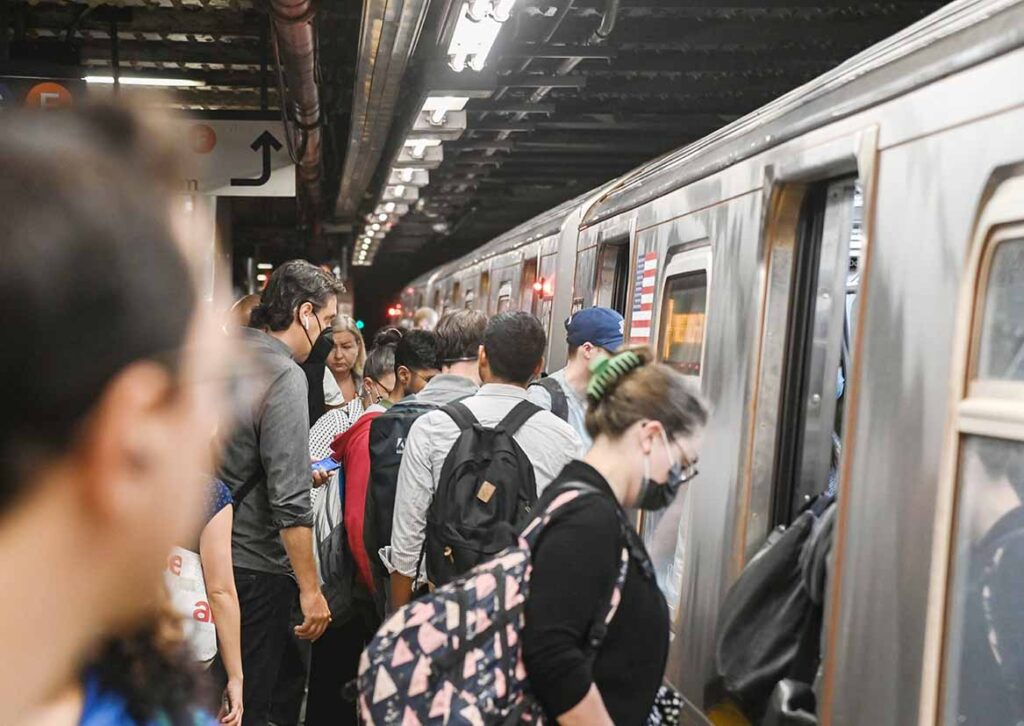Forecasting Budget Gap
MTA Warns of Higher Fares, Deferred Capital Projects
NEW YORK—The Metropolitan Transportation Authority released its 2023 budget on Nov. 30 and issued warnings of possible staff reductions, deferred or cancelled capital projects and other harsh measures if it does not secure additional governmental funding in light of continued low ridership caused by the COVID pandemic.
The proposed 2023 budget and four-year financial plan was released as the MTA faces a myriad of negative headwinds, including the fact that $15 billion in federal COVID-relief funds has been drawn down to $5.6 billion. The proposed 2023 budget assumes $600 million in additional governmental funding or alternatively, significant additional cost-saving MTA actions.
The proposed financial plan also contains a roadmap for the MTA’s longer-term fiscal stability, safeguards New York’s essential transportation services, enhances transit equity, and provides a sustainable foundation for New York’s continued economic growth, MTA officials noted,

The November plan, following recommendations put forward in the July financial plan, outlines actions from the MTA to shrink the structural deficit from $2.6 billion to $600 million in 2023 and from almost $3 billion in 2025 and 2026 down to $1.2 billion. Starting in 2023, the MTA projects operating efficiencies yielding $100 million in savings in 2023 and rising to $416 million in savings by 2026.
Absent additional government funding to address 2023’s $600 million deficit, further MTA actions will be necessary, including the faster spend-down of remaining federal funds, staffing reductions, higher fare increases, deferral or cancellation of capital projects, and/or service reductions.
“The past three years have proven how essential the MTA is to the success of the New York City region—in New York, robust transit service is as critical as air and water,” said MTA Chair and CEO Janno Lieber. “The budget proposed today puts us in a position to continue delivering the essential transit services that customers rely on while also prioritizing long-term fiscal responsibility.”
“In the July financial plan, we laid out the case for early action to address the MTA’s looming fiscal cliff,” said MTA Chief Financial Officer Kevin Willens. “Today’s proposed budget and financial plan further demonstrates the need for new, dedicated sources of funding which, combined with MTA actions to find savings without limiting service, can greatly reduce the fiscal cliff and protect mass transit for the region.”
“In my six months at New York City Transit, I have seen first-hand that subways, buses, and paratransit are the lifeblood of this city, moving 5 million New Yorkers every day,” said New York City Transit President Richard Davey. “We are focused on finding cost-savings to ensure fiscal stability into the future while delivering frequent, reliable service and achieving a sustained level of at least 70% customer satisfaction across subway, bus, and paratransit by June 2024.”
“As we prepare to unveil the biggest expansion to commuter rail service in generations, it has never been more critical to provide the quality of service that railroad customers depend on,” said Long Island Rail Road Interim President and Metro-North President Catherine Rinaldi. “As ridership continues to recover, we are committed to delivering service while providing the cost-savings needed to address long-term fiscal challenges.”
The proposed $19.2-billion budget assumes the June 2023 restoration of recurring fare and toll increases, ultimately providing $373 million in additional annual revenue.
In calculating the out-year deficits, McKinsey & Company conducted an updated ridership forecast, released in concurrence with the MTA’s July Financial Plan. In the four months since the forecast’s release, ridership across MTA services is tracking the midpoint projection of the forecast. The farebox revenue gap based on the McKinsey forecast when compared with pre-pandemic fare and toll revenue projections averages $2.1 billion from 2022-2026. The MTA is projected to have a lower than anticipated 2022 deficit, driven by lower than forecast expenses and higher than expected revenues. The outyear deficits exceed the July plan, primarily due to increased pension cost projections.
The MTA Board was scheduled to meet on Dec. 21 to consider and approve the 2023 budget.
On Nov. 29, New York State Comptroller Thomas DiNapoli stated that the Metropolitan Transportation Authority’s proposal to reduce budget gaps through 2028 by an average of $915 million annually by paying down debt raises questions on how it will find additional savings and revenue to fund operations when federal aid runs out.
While the MTA has identified a targeted $100 million in unspecified efficiency savings, this will not be enough to close its projected deficit of $1.6 billion starting in 2024 as pointed out by Mr. DiNapoli in October. Mr. DiNapoli urged the MTA to expand on these efforts, disclose specific actions and identify how they will impact fares and service delivery.
